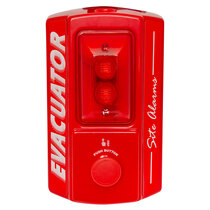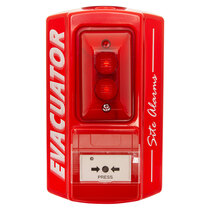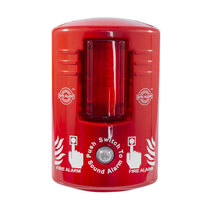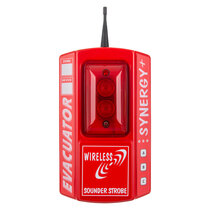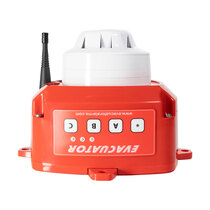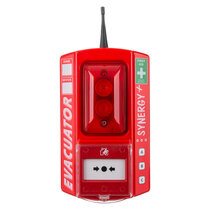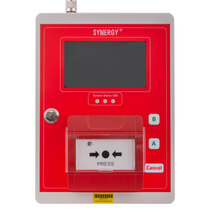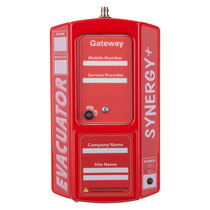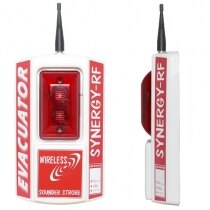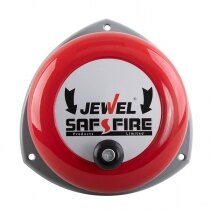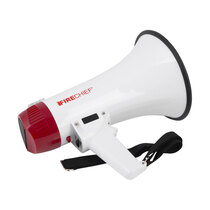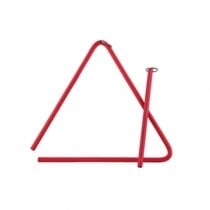-
Contact
Sales & Customer Service
0800 612 6537 support@safelincs.co.uk Live ChatDelivery Enquiries
0800 077 6149 - Resources
Fire & Safety Solutions
CALL OUR TEAM NOW 0800 612 6537
Also FREE from UK mobiles
Free Delivery
on 100s of Products
Live Chat - Online
Instant help & Advice
Trade Discounts
and exclusive pricing
0% Credit Available
Open an account now
5 Star Customer Feedback
Site Alarms
Building sites face unique fire safety challenges that standard domestic alarms simply can't handle. Construction environments require robust and reliable fire detection systems that operate effectively in the presence of dust, noise and harsh conditions. Weather is also a factor, and site alarms often need to be able to operate over a large area. What makes site alarms different from regular fire detectors? Site alarms are built to withstand the rigours of construction environments. They feature weatherproof casings, enhanced sensitivity settings, and wireless connectivity that works across large areas. Unlike home smoke detectors, these systems can operate in dusty conditions without constant false alarms. Construction sites generate dust, debris, and various particles that would trigger standard detectors repeatedly. Site-specific alarm systems use advanced filtering technology to distinguish between actual fire threats and construction-related particles. How do wireless site alarm systems work? Wireless site alarms create a network of interconnected detectors, call points and sounders across your construction site. When one detector identifies a fire risk, it immediately alerts all connected units simultaneously. This ensures everyone on site receives the warning, regardless of their location. The wireless technology eliminates the need for complex wiring installations. You can position detectors wherever needed and relocate them as your project progresses. Battery-powered units provide months of operation without external power sources. Which fire detection technology is most effective for construction sites? Heat detection proves most effective for construction environments. These detectors respond to rapid temperature changes rather than smoke particles, making them ideal for dusty conditions. They trigger when temperatures reach preset levels or rise rapidly. Optical smoke detectors work well in enclosed areas, such as temporary offices or storage containers. Combined heat and smoke detectors offer dual protection for critical zones where both detection methods add value. Are there specific regulations for construction site fire detection? Construction sites must comply with building regulations and health and safety requirements. The Construction (Design and Management) Regulations mandate adequate fire safety measures throughout the construction phase. Your fire detection system should meet British Standards for construction site safety. Regular testing and maintenance ensure compliance and optimal performance. Many insurance policies require the use of certified fire detection systems for construction projects. How many detectors does a typical construction site need? Coverage depends on your site size, layout, and specific risk areas. A general rule suggests one detector per 100 square metres for open areas. High-risk zones, such as fuel storage or electrical equipment areas, require additional coverage. What maintenance do site alarms require? Site alarms need regular testing to ensure reliable operation. Weekly tests verify battery levels and detector sensitivity. Monthly inspections check for physical damage from construction activities. Replace batteries according to the manufacturer's guidelines, typically every 6 to 12 months. Clean detector sensors monthly to prevent dust accumulation. Document all maintenance activities for compliance records. Ready to protect your construction site with professional fire detection? Explore our comprehensive range of site alarm systems, specifically designed for the most demanding construction environments. Consider our wireless site alarm systems for maximum flexibility, or browse our selection of manual site alarms for smaller projects. Our fire safety experts can help you select the ideal detection solution for your specific project requirements. For additional insights into workplace safety, read about fire safety on construction sites, which covers many principles that apply to construction environments. Frequently Asked Questions (FAQs) Can site alarms be used for emergencies other than fires? Yes, site alarms are designed to work for any emergency requiring evacuation or for alerting to a first aid emergency. They can be activated during chemical spills, violent incidents, or other dangerous situations. This versatility makes them valuable for construction sites, festivals, and temporary venues where multiple hazards exist. What's the wireless range for modern site alarm systems? Advanced systems, such as the Evacuator Synergy+, can connect up to 250 devices across a 2 km range. This wireless capability eliminates the need for complex wiring and allows flexible positioning as your site layout changes during construction phases. Are simple manual alarms sufficient for small construction sites? For small sites, basic options such as alarm triangles, megaphones, or rotary bells may be sufficient. However, your risk assessment determines the appropriate level of complexity. Larger construction sites typically require more sophisticated interconnected systems for comprehensive coverage. Do any site alarms feature a first aid alert? Some specialist units, such as the Evacuator Synergy+ system, include dedicated first aid buttons. When pressed, these devices send location-specific alerts to the base station, allowing first aid support to be dispatched quickly to the exact location of the person needing help. When should construction sites install temporary alarm systems? Construction sites should install temporary alarms from the earliest stages when permanent fire detection systems aren't feasible. These systems bridge the safety gap during construction phases, ensuring compliance with fire safety requirements and protecting workers and site visitors until permanent systems are connected.
Read more about site alarms...
Evacuator Sitemaster Push Button Site Alarm
- 9V battery operated
- Durable ABS plastic casing
- Push button activation
- Sounds an alarm at 110dB and visual warning
- Link up to 25 Evacuator units into one system
Evacuator Synergy Wireless Site Alarm Installation
- Carried out by trained and experienced engineers
- Provides peace of mind that site occupants can be warned of an emergency
- Allows easy initiation of site-wide evacuation
Evacuator Sitemaster Call Point Site Alarm
- Battery operated audio and visual warning alarm
- Features a resettable call point
- Durable ABS plastic casing
- 110dB sounder
- Link up to 25 Evacuator units into one system
Howler Site Alert
- Battery operated with low power warning
- 100dB alarm
- Fitted with Xenon strobe
- IP65 rating
- Link up to 20 Howler Site Alert units
Alert Point Manual Alarm System
- All models feature an integrated 102dB sounder
- Tough polycarbonate enclosure protects the electronic components
- Powered by a standard 9V PP3 battery
- Manufacturer's guarantee included as standard
Evacuator Synergy+ Wireless Call Point Site Alarm
- 4.5V battery powered – up to 3 years battery life
- Wirelessly links with up to 250 Synergy+ units within one system
- Call point activation with site-wide reset function
- Combined 110dB sounder and xenon strobe
- Durable construction and IP55 rated
Evacuator Synergy+ Wireless Sounder Strobe
- 4.5V battery powered – up to 3 years battery life
- Wirelessly links with up to 250 Synergy+ units within one system
- Site-wide reset function reset from a single location
- Combined 110dB sounder and LED strobe
- Durable construction and IP55 rated
Evacuator Synergy+ Wireless Site Alarm Automatic Smoke & Heat Detectors
- 9V battery powered – up to 3 years battery life
- Wirelessly links with up to 250 Synergy+ units within one system
- Provides automatic fire detection with a choice of Optical Smoke or A1R Heat
- Compatible with Apollo Series 65 conventional detector heads
- Call Points or other non-detector units are required to sound the alarm
Evacuator Synergy+ Wireless Call Point Site Alarm with First Aid
- 4.5V battery powered – up to 3 years battery life
- Wirelessly links with up to 250 Synergy+ units within one system
- Dedicated first aid button to notify Base Station
- Call point activation with site-wide reset function
- Combined 110dB sounder and xenon strobe
- Durable construction and IP55 rated
Evacuator Synergy+ Wireless Site Alarm Base Station with Call Point
- Mains powered via included 4.5V adaptor
- Wirelessly links with up to 250 Synergy+ units within one system
- Allows all linked devices to be tested from a single location
- Real-time RF connectivity status and low battery warnings
- Full colour touchscreen display for easy system setup and monitoring
Evacuator Synergy+ Wireless Site Alarm GSM Gateway
- Mains powered via included 4.5V adaptor with battery backup
- Wirelessly links with Synergy+ Base Station for system monitoring
- SMS notifications to up to 5 phone numbers each for fire and first aid
- Enables real-time system monitoring of device status and event history
- Multiple systems can be connected to one evac-m web portal account
Evacuator Synergy RF Sounder/Strobe Site Alarm
- 9V battery powered
- Wirelessly links with up to 40 Synergy RF units within one system
- To be used in conjunction with the Synergy RF Base Station or Call Point
- Combined 110dB sounder and xenon strobe site alarm
- Durable construction and IP55 rated
Evacuator Synergy RF Smoke Detector Site Alarm
- 9V battery powered site alarm
- Wirelessly interlinks with up to 40 Synergy RF units within one system
- Incorporates an optical smoke detector
- Designed to detect fast flaming fires
Evacuator Synergy RF Heat Detector Site Alarm
- 9V battery powered site alarm
- Wirelessly links with up to 40 Synergy RF units within one system
- Incorporates a heat detector
- Designed to detect changes in room temperature
Evacuator Synergy RF Call Point Site Alarm
- 9V battery powered
- Wirelessly links with up to 40 Synergy RF units within one system
- Call point activation
- Combined 110dB sounder and xenon strobe
- Durable construction and IP55 rated
Evacuator Synergy RF Base Station Site Alarm
- 9V battery powered base station site alarm
- Wirelessly links up to 40 Synergy RF units into one system
- Features a resettable call point and 85dB sounder
- Monitors all linked devices for low battery
- Displays which device has been activated
Megalarm Wireless Manual Call Point
- Reset/test key supplied as standard
- Maximum 100m range between manual call point and base alarm unit
- Up to 10 year lithium battery life
Firechief Mini Megaphone with Built-In Microphone
- Durable megaphone, suitable for emergency situations
- Press-talk trigger with built-in microphone
- Whistle / siren function
- Rugged ABS plastic construction
- Approx. range up to 250m
Alarm Triangle and Striker
- Cost effective alarm sounder
- No training required
- Requires no power supply or batteries
Page 1 (20 of 33 Products)
Temporary fire alarm systems for construction sites
Construction sites pose a challenge for standard fire safety recommendations, as during early construction, it is not possible to install a suitable fire detection system. While the FSO and Building Regulations require 'suitable' fire detection and alarm systems, and compliance with BS 5839 is recommended, these standards apply only to completed buildings, leaving a gap for construction sites. To address this, manually activated site alarms can be used throughout the site until a permanent system is installed. This ensures essential fire safety measures are in place during construction.
For more information about the appropriate use of temporary site alarm systems, read our blog.
Wireless manual site fire alarms
Manual site fire alarms come in many forms. At their simplest, an Alarm Triangle and Striker, Megaphone, or Rotary Alarm Bell may be deemed suitable wireless options for small sites, such as campsites or small outdoor work sites. For larger settings, such as construction sites and music festivals, more complex systems may be deemed necessary by the risk assessment. Where the range of these systems have previously been limited by wires, newer models such as the Evacuator Synergy+ range enable wireless connections of up to 250 devices over a 2km range.
Site alarms for emergency evacuation and first aid
As well as providing a way to manually raise the alarm in the event of a fire, site alarms can be activated in other dangerous emergencies, such as chemical spills, or violent attacks at a venue. This ensures that staff and visitors are warned of danger and the need to evacuate, while alerting the site manager to the need to respond accordingly.
Further to this, some specialist call points, such as Evacuator’s Synergy+ unit are fitted with a dedicated first aid button. When pressed, an alert will display on the system base station providing the location of the activated unit, so that first aid support can be sent to the person in need.




















